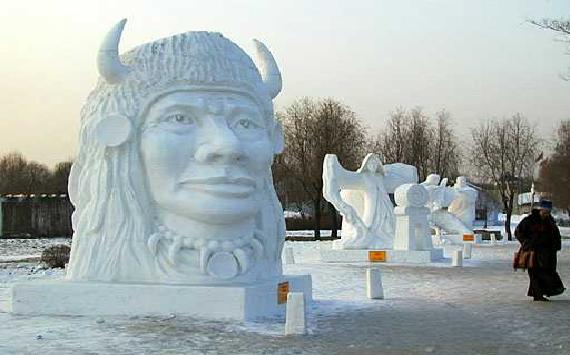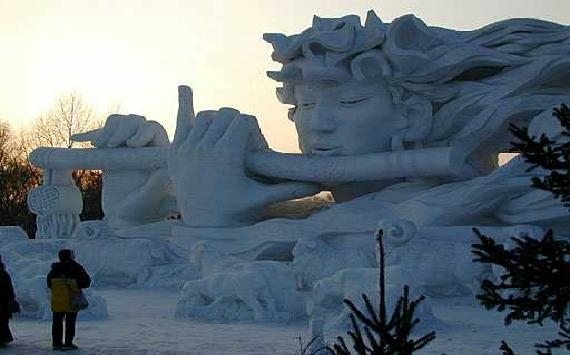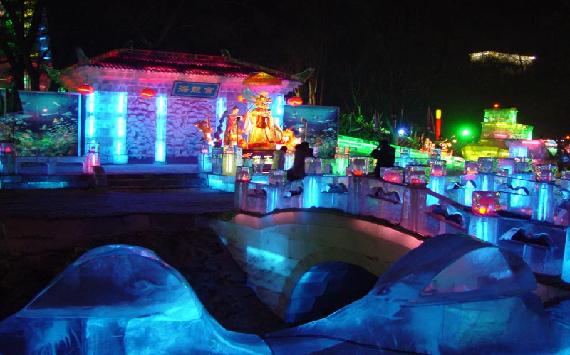The northern Chinese city of Harbin is also called the "Ice City".It is the capital city of China's northernmost province, Heilongjiang, and is a modern metropolis of 2.6 million people. Located along the Russia Chinese border, it's culture is a rich and diverse mixture of many minorities from aross Asia and neighboring countries. Many Russian refugees who fled the Revolution in 1917 call Harbin their home. The construction of the Chinese Eastern railway helped industrialize the city, making it the number one manutacturing location in North-eastern China.
Harbi is also a major processing facility center for such commodities as, soy beans, sugar beets, leather, and tobacco. More technologically directed factories procuce electric power turbine, plastics, and equipment for oil field exploration and drilling. Why then is Harbin's most famous claim to fame is it's yeary Snow-Ice Festival?








